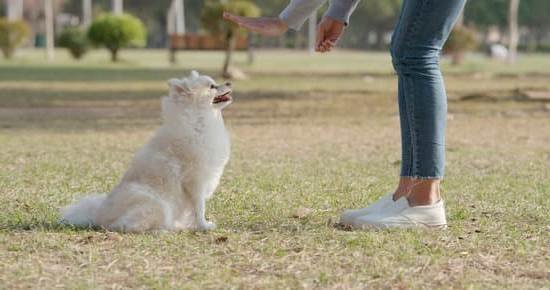Can you crate a dog that isn’t crate trained? Crate training is a popular method used by dog owners to help with the housebreaking process and to provide a safe space for their canine companions. However, what happens when you have an older dog who has never been introduced to the concept of crate training? Is it possible to successfully crate train an untrained dog?
Crate training is not just about confining your dog to a small space, but rather it is about creating a positive association with the crate and teaching them to view it as their den. In this article, we will explore the challenges of crate training an older, untrained dog and discuss the pros and cons of using this method for canines who have never been exposed to it before.
We will also delve into alternative methods for managing an untrained dog in the home and provide tips on how to gradually introduce an untrained dog to a crate. Additionally, we will address common misconceptions about crate training for older dogs and share real-life success stories of owners who have successfully crate trained their untrained dogs. Join us as we uncover the potential for crate training to transform the life of an untrained dog and their owner.
The Challenges of Crate Training an Older, Untrained Dog
Crate training an older, untrained dog can present a unique set of challenges for pet owners. Unlike crate training a puppy, older dogs may have already developed negative associations with confinement or may simply be set in their ways. As a result, it is important for owners to understand the potential obstacles they may face when attempting to crate train an older dog.
Behavioral Issues
One of the main challenges of crate training an older, untrained dog is addressing any existing behavioral issues that may hinder the process. For example, if the dog has a history of anxiety or fear, being confined to a crate may exacerbate these issues and lead to destructive behavior. Additionally, some older dogs may have never been properly house-trained, making it difficult to enforce good behavior within the confines of a crate.
Lack of Familiarity
Older dogs who have never been exposed to crates may also struggle with the concept due to lack of familiarity. Unlike puppies who can be gradually introduced to crates during their formative months, older dogs may not easily adapt to an unfamiliar and enclosed space. This lack of familiarity can result in resistance or even aggression towards the idea of being confined.
Health Concerns
Finally, older dogs may also have underlying health concerns that make crate training more challenging. Conditions such as arthritis or hip dysplasia can make it uncomfortable for the dog to enter or exit the crate, leading to increased resistance and aversion towards confinement. It is important for owners to consider their dog’s physical limitations when implementing a crate training regimen.
Despite these challenges, with patience and persistence, it is still possible to successfully crate train an older, untrained dog using alternative methods and specific strategies tailored towards their individual needs.
The Pros and Cons of Crate Training for Older Dogs
Crate training for older dogs can be a controversial topic among dog owners and trainers. There are both pros and cons to consider when deciding whether crate training is the best option for an untrained older dog.
Pros of Crate Training
Crate training can provide a safe and secure space for an older, untrained dog, especially if they have behavioral issues or anxiety. It can also aid in housebreaking, as dogs are naturally inclined to keep their sleeping area clean. Additionally, crates can be used as a tool for managing destructive behaviors such as chewing on furniture or belongings when the owner is away.
Cons of Crate Training
On the other hand, some argue that crate training can cause stress and anxiety in older dogs who are not accustomed to being confined. It may also lead to feelings of isolation and loneliness. Furthermore, some dogs may associate negative emotions with the crate if it is used punitively, which can make the training process more challenging.
It’s important to carefully weigh these pros and cons when considering crate training for an older, untrained dog. Every dog is unique and may respond differently to being crated, so it’s essential to consider the individual needs and personality of the dog before making a decision.
Alternative Methods for Managing an Untrained Dog in the Home
For some pet owners, crate training may not be a feasible option for managing an untrained dog in the home. In these cases, it’s important to explore alternative methods for ensuring the safety and well-being of the dog, as well as maintaining a harmonious household.
One effective alternative is utilizing baby gates or pet barriers to confine the dog to a certain area of the home. This can prevent the dog from causing damage or getting into mischief while still allowing them some freedom of movement.
Another alternative method for managing an untrained dog in the home is setting up a designated “safe space” for the dog. This could be a cozy corner with their bed, toys, and water dish, where they can retreat when they need some time alone. By creating this safe space, you can help reduce stress and anxiety in your untrained dog while also protecting your home from any potential damage they may cause.
Additionally, providing ample exercise and mental stimulation for your untrained dog is crucial for managing their behavior in the home. Regular walks, playtime, and interactive toys can help tire out your dog both physically and mentally, reducing their likelihood of engaging in destructive behaviors. Engaging in positive reinforcement training methods can also aid in managing an untrained dog’s behavior without relying on crate training.
The Process of Gradually Introducing an Untrained Dog to a Crate
Introducing an untrained dog to a crate can be a challenging but ultimately rewarding process. With patience, consistency, and positive reinforcement, it is possible to crate train a dog that has not been previously trained. Here are some steps to help you gradually introduce an untrained dog to a crate:
1. **Choose the Right Crate**: Select a crate that is large enough for your dog to stand up, turn around, and lie down comfortably. It should also have good ventilation and be sturdy enough to contain your dog.
2. **Make the Crate Inviting**: Place comfortable bedding, toys, and treats inside the crate to make it a welcoming space for your dog. You can also leave the crate door open initially so that your dog can explore it at their own pace.
3. **Positive Association**: Associate the crate with positive experiences by feeding your dog their meals near or inside the crate. This will help them view the crate as a positive and safe place.
Gradually increasing the amount of time your untrained dog spends in the crate while ensuring they have positive experiences will help them acclimate to being crated. Remember that patience and consistency are key in this process.
Addressing Common Misconceptions About Crate Training for Older Dogs
When it comes to crate training an older, untrained dog, there are several misconceptions that can deter dog owners from considering this method. It’s important to address these misconceptions and provide the necessary information to help owners make an informed decision about crate training for their older canine companions. Here are some common misconceptions about crate training for older dogs:
1. Cruelty: One of the biggest misconceptions about crate training is that it is cruel and inhumane. In reality, when done correctly, crate training provides a safe and secure space for a dog to call its own.
2. Ineffectiveness: Some believe that an older dog cannot be successfully trained to use a crate. However, with patience, consistency, and positive reinforcement, even older dogs can adapt to crate training.
3. Stress and Anxiety: There is a misconception that using a crate will cause stress and anxiety in an older dog. However, when introduced properly and used as a positive environment, the crate can actually become a source of comfort for the dog.
By addressing these common misconceptions about crate training for older dogs, we can help dog owners understand the potential benefits of this method for managing an untrained dog in the home. With proper education and guidance, more owners may be willing to consider this option for their beloved pets.
Tips for Successfully Crate Training an Older, Untrained Dog
Successfully crate training an older, untrained dog can be a challenging but rewarding process. It’s important to remember that patience and consistency are key when it comes to teaching an older dog new habits. One tip for successfully crate training an older dog is to make the crate a positive and inviting space. This can be done by placing comfortable bedding, favorite toys, and treats inside the crate to create a welcoming environment for the dog.
Another important tip is to start slow and gradually increase the amount of time the dog spends in the crate. Begin by introducing the dog to the crate for short periods while you are at home, allowing them to become comfortable with the space before leaving them alone in it. It’s also essential to avoid using the crate as a form of punishment, as this can create negative associations with the space and hinder the training process.
Consistency is crucial when it comes to crate training an older, untrained dog. Establishing a routine for meal times, bathroom breaks, and crate time can help the dog understand what is expected of them.
Additionally, providing plenty of exercise and mental stimulation outside of crate time can help reduce anxiety and make it easier for the dog to settle down in their crate when needed. By following these tips and remaining patient throughout the process, it is possible to successfully crate train an older, untrained dog and improve their overall behavior and well-being.
Real-Life Success Stories of Crate Training Older, Untrained Dogs
Successfully crate training an older, untrained dog may seem like a daunting task, but many pet owners have achieved great results through patience and perseverance. One such success story is that of Max, a 5-year-old Labrador Retriever who had never been crate trained. His owners initially faced resistance from Max, who would whine and bark whenever they left him in the crate.
However, through consistent positive reinforcement and gradually increasing the time he spent in the crate, Max eventually became comfortable being crated for extended periods. Now, his owners can leave him in the crate with peace of mind, knowing that he is safe and secure.
Another inspiring example is that of Luna, a 7-year-old rescue dog who had severe separation anxiety and destructive behaviors when left alone. Her owners were hesitant to try crate training at first, fearing it would exacerbate Luna’s anxiety. However, with the help of a professional dog trainer, they implemented a slow and gentle approach to introducing Luna to the crate.
Over time, Luna’s confidence grew, and she began to see the crate as her safe space. Today, Luna willingly enters her crate when her owners leave the house and no longer exhibits signs of distress or destructive behavior.
These real-life success stories demonstrate that even older, untrained dogs can benefit from crate training when approached with patience and understanding. By providing a secure and comfortable environment for these dogs to rest and relax in their crates, pet owners have not only transformed their pets’ lives but also improved their own quality of life by eliminating destructive behaviors and separation anxiety.
| Dog | Breed | Training Outcome |
|---|---|---|
| Max | Labrador Retriever | Comfortable being crated for extended periods |
| Luna | Rescue Dog | No longer exhibits signs of distress or destructive behavior when crated |
Conclusion
In conclusion, while crate training an older, untrained dog may present its challenges, it is important to recognize the potential for this method to significantly improve the quality of life for both the dog and their owner. By gradually introducing the dog to the crate and addressing common misconceptions about crate training, there is a real opportunity for transformation.
It is crucial for owners to consider the pros and cons of crate training for older dogs, as well as exploring alternative methods for managing an untrained dog in the home. However, with patience, consistency, and positive reinforcement, many dogs can successfully adjust to crate training even in their later years.
Real-life success stories of crate training older, untrained dogs serve as powerful examples of the impact this method can have. From improving behavior issues to providing a safe space for the dog to relax and feel secure, crate training has the potential to create positive change. Ultimately, with dedication and understanding, crate training has the power to transform the life of an untrained dog and their owner.
Frequently Asked Questions
Is It OK to Not Crate Train Your Dog?
Crate training is not the only option for training a dog, but it has its benefits. It can provide a safe space for a dog and help with housebreaking and preventing destructive behavior when unsupervised.
However, if done incorrectly, it can also cause anxiety and stress in some dogs. So, while crate training can be helpful, it’s not necessarily essential for every dog.
Is It Ever Too Late to Crate Train a Dog?
It is never too late to crate train a dog, but it may require more time and patience, especially for older dogs. The key is to introduce the crate gradually and positively, using treats and toys to create a positive association with the crate.
It’s important to go at the dog’s pace and not force them into the crate, as this could cause further aversion.
How Do You Crate Train an Untrained Dog?
Crate training an untrained dog requires patience and consistency. Start by making the crate inviting with comfortable bedding and enticing toys or treats. Encourage the dog to explore the crate on their own terms without forcing them inside.
Gradually work up to closing the door for short periods of time while rewarding calm behavior. Consistency in your approach and positive reinforcement will be key in successfully crate training an untrained dog.

Welcome to the blog! I am a professional dog trainer and have been working with dogs for many years. In this blog, I will be discussing various topics related to dog training, including tips, tricks, and advice. I hope you find this information helpful and informative. Thanks for reading!





